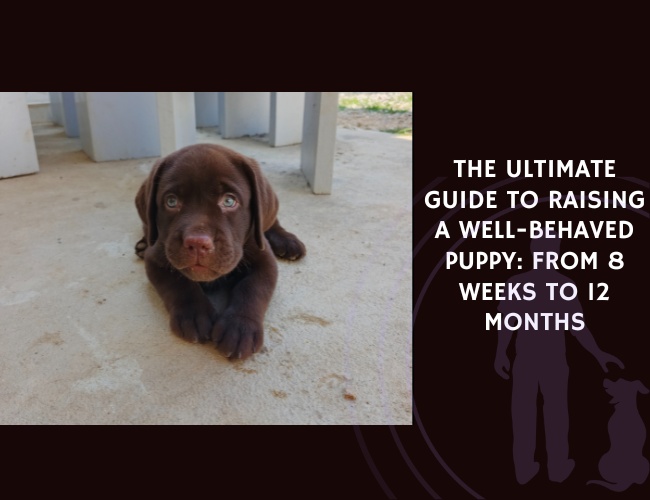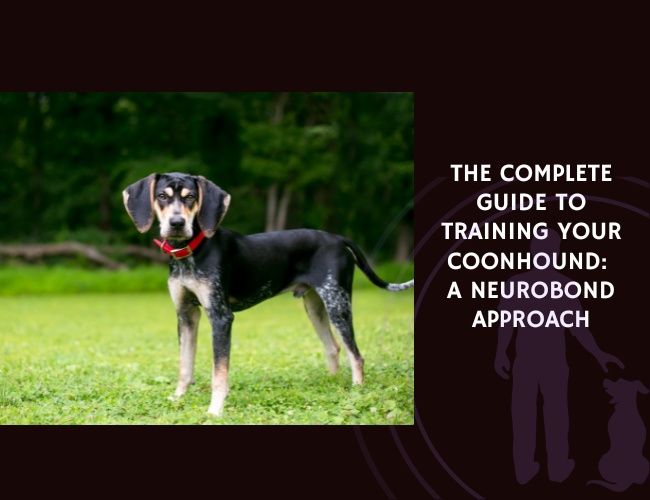Introduction: The First Year Journey
Why the First Year Matters
Bringing home a new puppy is the beginning of a wonderful journey, and the first year is more important than many people realize. How you guide, train, and nurture your puppy during this time shapes their lifelong behavior and personality. Think of it as laying the foundation for a happy, confident, and well-mannered adult dog. A little patience, plenty of love, and lots of smart choices early on can help prevent major challenges later. The habits formed now—good or bad—are likely to last for years to come! 🐶
A Blend of Science and Practical Advice
Raising a puppy can feel overwhelming, especially with so much conflicting information online. That’s why this guide is designed to combine the latest scientific research with practical, real-world tips. Instead of relying on old myths, you’ll get evidence-based strategies that truly work. Every topic, from development stages to training and health, follows up-to-date veterinary and behavior science.
But science alone isn’t enough—you also need advice you can use every single day. This guide offers step-by-step instructions and troubleshooting for common situations. You’ll discover solutions that fit busy family life, whether you’re a first-timer or a seasoned dog lover.
What You’ll Learn and How This Guide Helps
Throughout this journey, you’ll explore everything you need to raise your puppy thoughtfully and effectively. Here’s what you can expect:
- Understanding your puppy’s growth milestones
- Building positive social experiences
- Teaching essential commands and life skills
- Practical, positive training techniques
- Keeping your puppy safe and healthy
- Solutions to common puppy hiccups
- Creating routines and a supportive home
Our goal is to help you feel empowered and prepared every step of the way. With compassion, patience, and consistent guidance, you’ll build a strong partnership and set your puppy up for a lifetime of good behavior and companionship.
Let’s dive into the foundations of raising your pup—a year that will shape your relationship for life!
Understanding Puppy Development Stages
The First Weeks: Socialization and Fear Imprinting
Welcoming a new puppy into your life is like opening the door to an adventure full of changes, learning, and joy. The first year is a whirlwind of growth, but the journey starts strong between 8-12 weeks. This is called the critical socialization window. During these weeks, puppies are open to new sights, sounds, people, animals, and places. Every moment is a learning opportunity! Taking time now to expose your pup to gentle, positive experiences lays the groundwork for a confident, happy dog later on.
However, this period also includes a “fear imprint” stage. Scary or stressful events can really stick. If your puppy gets startled or hurt, the memory may shape future fears. That’s why extra patience and support are a must. If your puppy seems nervous, offer comfort and try again later, making sure every experience is a positive one. Remember, your calm presence will teach them the world is safe.
From Teething to Teen Attitude: 3-6 Months
Now, let’s talk about the 3-6 month old phase. This is when teething hits hard. Your puppy will likely chew more as their baby teeth fall out and adult teeth come in. Chewing is normal, so offer safe toys and redirect from off-limits items. At this age, puppies also start testing a bit of independence by exploring new things—and maybe some boundaries! Expect more curious behavior, some extra zoomies, and a desire for adventure.
This is the perfect time to keep up gentle, regular socialization. Let your puppy meet friendly people and calm dogs. Supervise each new experience and make sure it ends on a happy note. With patience, positive guidance, and consistency, you help prevent behavior problems before they start.
Adolescence: The Home Stretch
From 6-12 months, puppies start acting more like teenagers. You might notice your puppy becoming bolder, testing rules, or even forgetting things they learned before. It’s all part of adolescence! For female puppies, the first heat cycle might occur during this time.
To guide your pup through these ups and downs, keep up your training, offer clear routines, and set gentle but firm boundaries. Don’t be surprised by a little stubbornness—this is just growing up! Training, playtime, and love keep your connection strong while helping your puppy build maturity and confidence.
With each new stage comes unique challenges and adorable milestones. Recognizing these natural changes helps you stay patient, compassionate, and ready for the next chapter with your puppy by your side.
Effective Socialization: Building a Confident Puppy
Positive Exposure to the World
Introducing your puppy to new sights, sounds, and experiences is one of the most important parts of puppyhood 🎉. Between 8 and 12 weeks, puppies are especially open to learning about the world around them. This is the sweet spot for positive exposure! Make it a goal to gently introduce your puppy to a variety of people, friendly dogs, and different environments—like parks, sidewalks, and busy streets.
Keep each outing short at first. Use treats, toys, or cheerful praise so your puppy links new experiences with happy feelings. Remember, new things can be overwhelming, so always move at your puppy’s pace. If your puppy seems nervous or unsure, give them space, stay calm, and try again later. Your support will help them build confidence over time.
Preventing Negative Imprinting and Handling Fear
Puppies can form lifelong fears if they encounter something scary during early socialization. Be on the lookout for signs of stress, like cowering, barking, or refusing to approach. If your puppy gets spooked, don’t force them to interact. Instead, move away from the trigger and let your puppy relax. Gradually reintroduce the new thing at a comfortable distance, rewarding calm interest. This gentle approach helps prevent negative associations and builds resilience.💡
Socialization and Health: Finding the Balance
While it’s tempting to take your puppy everywhere, be mindful of their health. Young pups need vaccinations, and some places (like dog parks or pet stores) carry risks for unvaccinated dogs. Focus on safe socialization: invite healthy, vaccinated dogs for playdates, or carry your puppy in your arms during outings before their shots are complete. Chat with your veterinarian to make a plan that supports both your puppy’s social needs and their immune system.
Early socialization sets the stage for your puppy’s behavior later in life. With patience, positivity, and care, you’ll help your puppy grow into a confident companion. As you continue your journey, the next step is giving your puppy the essential training foundations to make all those new experiences even more rewarding.
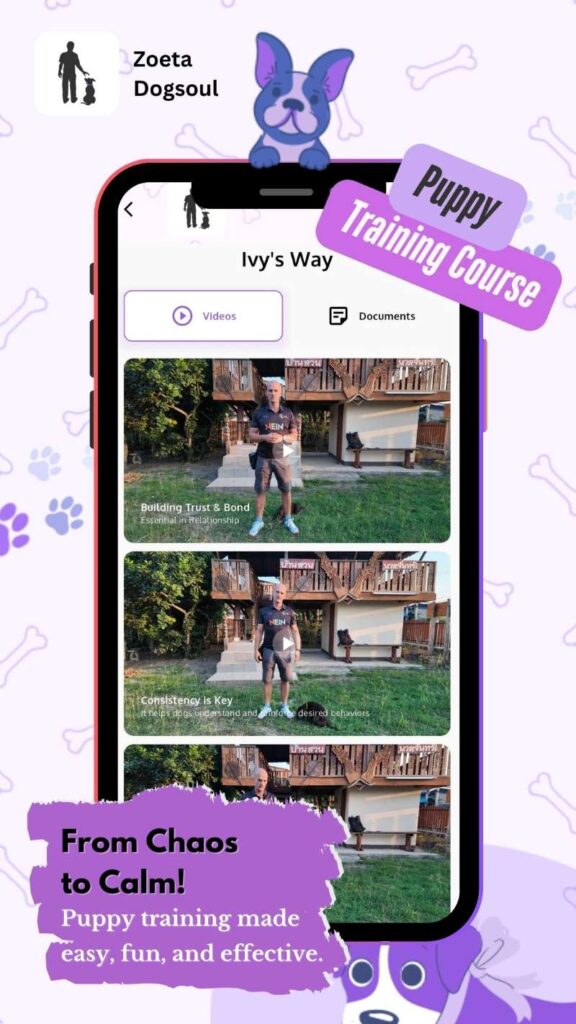
Essential Training Foundations
Building a strong foundation in your puppy’s first year makes all the difference for their future. Let’s break down the essentials that support a happy, well-behaved companion.
Core Commands for Everyday Life
Start with name recognition—use your puppy’s name cheerfully before every cue. Practice “come” in safe spaces; reward your puppy each time they respond, making it a fun experience. Training “sit,” “down,” and “stay” can be worked into daily moments, like before meals or when you greet your puppy at home. These basic commands increase your control in exciting situations and help your puppy understand what’s expected.
Leash walking is another crucial foundation. Begin indoors or in low-distraction areas, rewarding your puppy for walking beside you and checking in with you. Keep initial walks short and positive, giving praise and treats for every good step.
Crucial Life Skills Every Puppy Needs
Life skills go beyond simple obedience. Crate training is a gentle way to provide your puppy with a safe retreat. Make the crate a happy spot by feeding meals inside and rewarding calmness. Start with short periods and work up as your puppy learns to settle.
Grooming acceptance is also key. Touch your puppy’s paws, ears, and tail often, giving treats and praise to make handling stress-free. Even short brushing sessions can set them up for positive vet and grooming visits.
Practice alone time by briefly leaving the room, then returning with a treat or cheerful “good dog!” This helps prevent separation anxiety and builds independence.
Impulse Control Techniques
Puppies are naturally curious—sometimes, that means jumping or grabbing for food. Help your puppy develop self-control by teaching the “wait” or “leave it” cues. Practice waiting at doorways or before meals. Offer a treat when your puppy sits calmly instead of lunging for it.
Limit temptations and reward calm, patient behaviors. If your puppy gets too excited, pause and give them a chance to regroup. Consistency from all family members is key here—everyone should use the same cues and routines, ensuring no mixed messages.
Each training session sets your puppy up for lifelong success. Keep things light and positive, and celebrate every win, no matter how small. 🐶
As your puppy grows, new challenges will emerge. The next step is to ensure their health and happiness, supporting all you’ve started here.
Start. Stay. Grow.
The First Year Shapes Everything
Your puppy’s early months aren’t just cute—they’re critical. From socialisation windows to first fears, this is where habits, trust, and character take root. What you build now becomes the behaviour you live with later. Be calm. Be consistent. Be their guide.
Structure Creates Safety
Puppies crave predictability. Clear routines, gentle exposure, and positive reinforcement help them understand the world and their place in it. It’s not about control—it’s about communication. Your structure becomes their freedom.
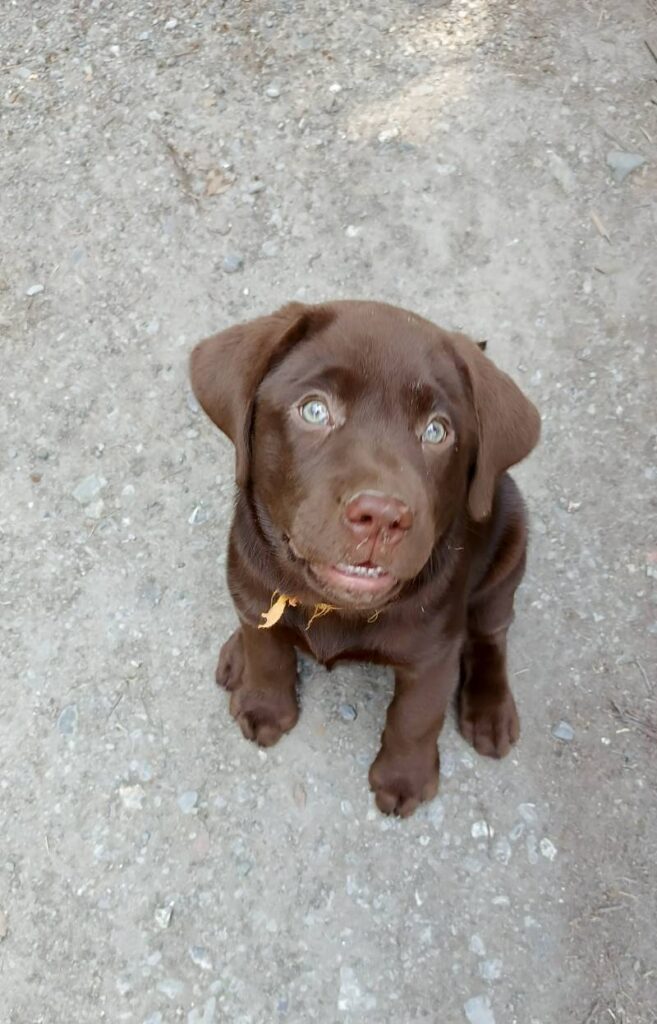
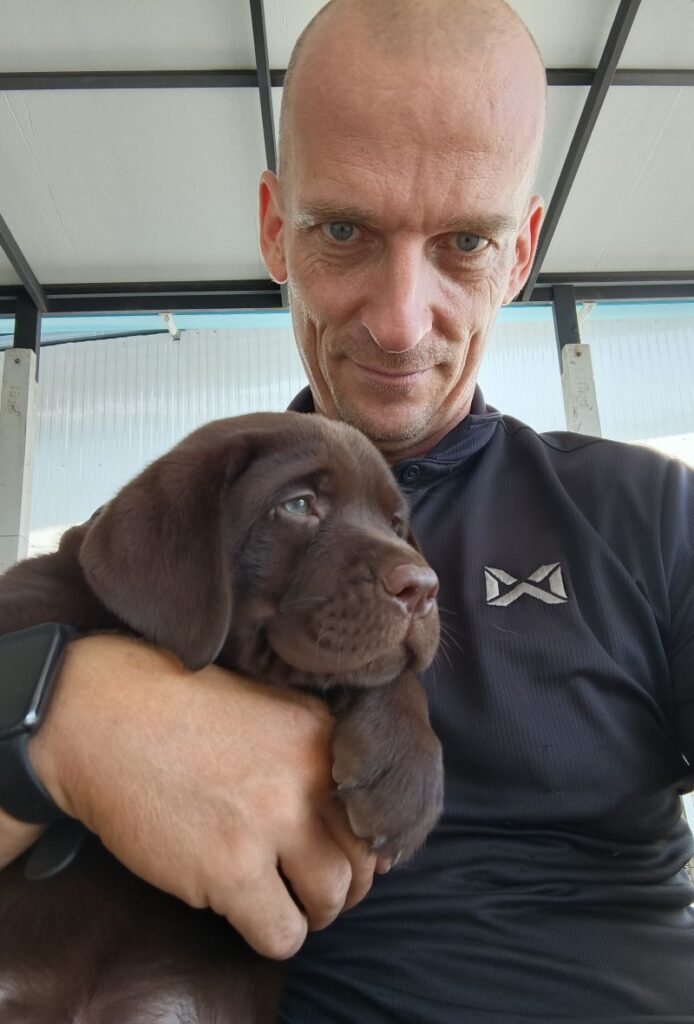
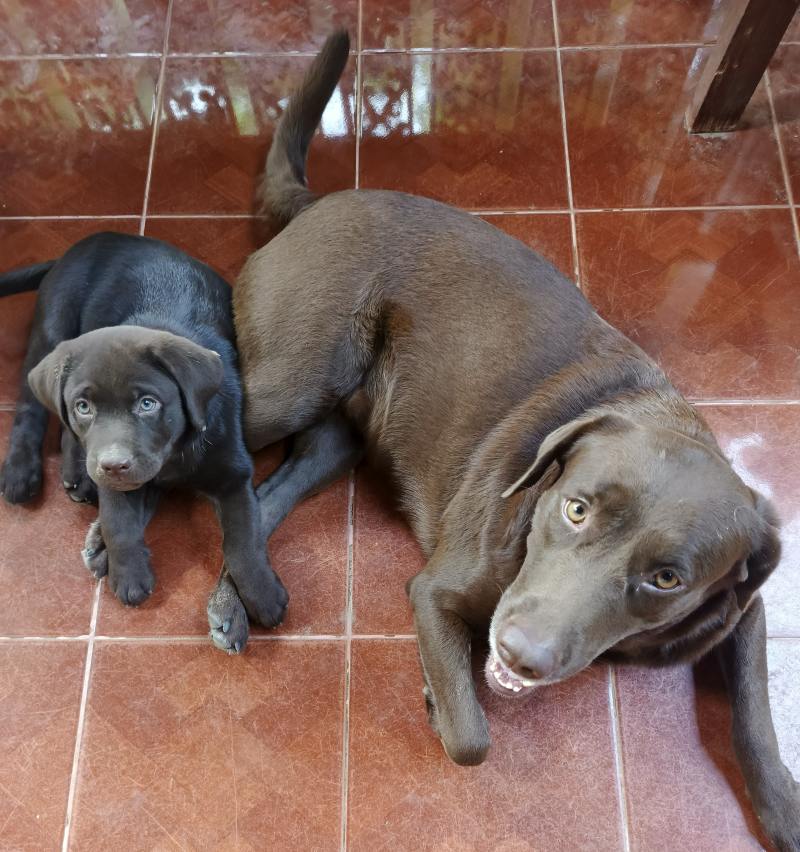
Connection Beats Correction
There will be setbacks—chewed shoes, accidents, forgotten cues. But every challenge is a chance to teach through trust. Celebrate progress, reward curiosity, and respond with empathy. Because raising a well-behaved puppy isn’t about obedience—it’s about a lifelong bond.
Positive Training Methods That Work
Why Choose Positive Reinforcement?
When it comes to training your puppy, positive reinforcement isn’t just a buzzword—it’s the gold standard. Using rewards like treats, praise, or play, you’re telling your puppy, “Yes! That’s what I want!” This approach helps your puppy associate learning new skills with fun and trust. 🦴 Research shows that positive methods are the most effective and humane for teaching puppies what’s right. In contrast, punishment-based methods can damage your puppy’s trust in you and even cause fear or anxiety. That’s why we focus on building a lasting bond through kindness and encouragement .
Mastering Clicker Training and Reward Timing
Clicker training is a simple but powerful method. The idea is to use a small device that makes a “click” sound at the exact moment your puppy performs the desired behavior. The click tells your puppy, “Great job! A treat is coming.” Timing here is everything. You want to click the second your puppy does the right thing, then immediately follow with a reward. Over time, your puppy learns to repeat these positive behaviors, making your training smoother and faster.
- Use a clear, consistent “click” for every correct behavior.
- Reward immediately—don’t wait more than a second or two, or your puppy might be confused.
- Keep training sessions short and upbeat.
Redirecting Unwanted Behaviors without Losing Trust
Even the best-behaved puppies slip up now and then! Instead of raising your voice or punishing, try gentle redirection. For example, if your puppy starts chewing on a shoe, calmly offer a chew toy instead. Praise your puppy when they choose the toy. If a correction is needed, it should be brief and guide your puppy toward a better choice—not scare them. This way, you maintain trust and encourage your puppy to keep learning with you.
Remember, a positive approach sets the stage for a happy, cooperative relationship. Consistency and patience will help both you and your puppy enjoy every step of the training journey.
Health Essentials for a Thriving Puppy
Providing the best health care for your puppy starts with simple, everyday choices and routine check-ins. Let’s break down what a thriving, healthy puppy truly needs.
Preventative Veterinary Care
Regular vet visits set your puppy up for success. Follow your veterinarian’s advice for a proper vaccination schedule—this is your best defense against serious diseases. Puppies typically start vaccines at 8 weeks, with boosters given every few weeks until about 16 weeks of age. Your vet will also guide you on when to start heartworm prevention and how to keep up with flea and tick control. Remember, a proactive approach means fewer problems down the road, and helps your puppy feel their best every day.
Nutrition for Growth and Development
Eating right is key to healthy development. Puppies need a complete, age-appropriate diet packed with proteins, healthy fats, and essential vitamins. Make sure you feed your puppy specially formulated puppy food and adjust serving sizes as they grow. Watch for healthy weight gain—pudgy puppies may look cute, but extra weight isn’t good for their development. Clean, fresh water should be available at all times.
Safe Parasite Prevention
Puppies are magnets for parasites like fleas, ticks, and worms. A vet-approved prevention plan is non-negotiable. Monthly treatments or chews are usually recommended, but always use products made for puppies and follow dosing instructions to avoid accidental illness. A routine stool check can catch any worms or intestinal parasites early before they cause big problems.
Considering Spaying or Neutering
Timing your puppy’s spay or neuter is a big decision. Recent science suggests the best timing depends on breed, gender, and health, so it’s a conversation for you and your vet. Some breeds benefit from waiting until they are a little older, while others may need earlier intervention. Your vet will provide the best advice based on the latest research and your pup’s unique needs.
Caring for your puppy’s health doesn’t need to be overwhelming. With regular vet care, good nutrition, and a parasite prevention routine, you’re giving your puppy the healthiest start possible. 🤗

Tackling Common Puppy Challenges
Navigating Teething, Nipping, and Chewing
Teething is a normal, if sometimes frustrating, stage for most puppies between three to six months old. You might find your puppy gnawing on anything within reach, from shoes to furniture! The best approach is to offer a variety of safe chew toys. Frozen treats can also soothe sore gums and provide a positive outlet for biting urges. If your puppy starts nibbling on hands or ankles, calmly redirect their mouth to a toy. Teaching bite inhibition—being gentle with their mouth—can help prevent accidental nips in the future.
If nipping becomes a game, don’t scold harshly. Instead, stop play briefly or ignore the behavior, returning your attention once your puppy calms down. Over time, they’ll learn that gentle play keeps the fun going!
Separation Anxiety and Building Independence
Many puppies feel uneasy when left alone at first. To help them grow comfortable, introduce short periods of separation and gradually increase the time. Use crate training or a safe, puppy-proofed area so your puppy feels secure. You can also toss treats or puzzle toys before you leave to create positive associations with alone time.
Stick to consistent routines for arrivals and departures—coming and going should be calm and matter-of-fact, not dramatic. If your puppy whines or barks, wait until they settle before greeting them. This teaches patience and reassures them that you’ll always return.
House Training and Troubleshooting
Potty training is one of the top concerns for new puppy owners. Start with regular potty breaks—first thing in the morning, after meals and play, and before bedtime. Reward your puppy immediately with treats and praise when they go in the right spot. Accidents are normal! Clean up thoroughly to remove scents that might encourage repeats.
If your puppy continues to have trouble, review your schedule and supervision. Sometimes, limiting free access around the house helps. Using a crate or playpen when you cannot watch your puppy closely can set them up for success.
Tackling these common challenges with patience and a consistent routine helps your puppy grow into a confident, well-mannered companion—and builds trust along the way 🐾.
Creating the Optimal Home Environment
A welcoming home is where your puppy’s best self can shine. A stable environment, paired with consistent routines, is key to shaping positive puppy behavior and reducing anxiety.
Establishing Consistent Routines and Clear Boundaries
Puppies thrive on structure! Setting a predictable schedule for meals, walks, training, and bedtime helps your puppy feel secure. Try to keep mealtimes and potty breaks around the same times each day. This predictability is comforting, especially during those early weeks when everything is new and possibly overwhelming.
Clear rules are equally important. Decide in advance what’s allowed—like whether your puppy can be on couches or which rooms are off-limits. Once set, everyone in your household should enforce the same boundaries. Mixed signals can be confusing for puppies, slowing down learning and possibly causing misbehavior. Consistency builds trust and helps your puppy understand what’s expected.
Designing an Enriched Environment
Ensuring your puppy’s space is safe and stimulating will help keep boredom (and mischievous moments) at bay. Set up a cozy, quiet spot for rest, such as a soft bed or crate. This gives them a place to relax whenever things get noisy or busy.
Offer a range of toys—think chew toys for teething, plush toys for comfort, and puzzle toys that make your puppy problem-solve. Rotate these toys weekly to keep things interesting. Also, supervised playtime outdoors introduces new scents and textures, boosting your puppy’s confidence and curiosity.
Ensuring Family Consistency
It takes a team! All family members need to use the same commands, cues, and responses. If one person lets the puppy jump up while another discourages it, things get confusing fast. Have a family meeting, agree on ground rules, and practice together. Consistency isn’t just good for the puppy; it’s less stressful for everyone involved.
A welcoming, enriched, and consistent home gives your puppy the confidence and guidance to thrive. With the right structure, your puppy will feel safe and supported as they grow and learn new skills. 🏡
Adapting Training to Your Unique Puppy
Recognizing Individual Temperament and Breed Traits
Every puppy is a one-of-a-kind companion, with personality quirks and breed-specific tendencies that shine through as they grow. Some puppies are bold and adventurous, while others might be more cautious or clingy. Breeds also play a role—herding breeds may love a job to do, while guardian types might be slower to warm up to new people. The key? Take time to observe how your puppy interacts with the world. Do they get excited meeting strangers, or do they prefer quiet spaces? Does your pup love chasing toys, or are they content to watch from the sidelines? Understanding these preferences will help you shape your training approach to set your dog up for success.
Adjusting Expectations and Training Methods
It’s important to stay flexible, especially if your puppy learns at a different pace or struggles with certain commands. Puppies develop and mature at individual rates. Some catch on quickly; others need more time and patience. Adjust your training plan to suit your puppy’s speed, energy level, and confidence.
Try not to compare your pup to others—the journey is unique for everyone! Keep sessions short and fun, use plenty of treats and praise, and break down complex tasks into easy-to-learn steps. If frustration pops up, take a step back and focus on what your puppy enjoys or excels at. This keeps learning positive for both of you—like turning training time into a fun game! 🎉
When to Seek Professional Help
No puppy is perfect, and sometimes challenges come up that feel overwhelming—think excessive fear, serious aggression, or ongoing trouble with house training. When you hit a roadblock you can’t manage on your own, reach out to a certified professional dog trainer or your veterinarian. They can evaluate your puppy’s needs and provide tailored support or refer you to a behavior specialist. Early help can make a big difference, building confidence and preventing future problems.
Remember, adapting your training sets the stage for a lifetime of happiness and teamwork together.
Conclusion: Setting Up for Lifelong Success
The Power of Consistency, Patience, and Positive Reinforcement
Building a strong, happy bond with your puppy is all about the little things you do every day. Consistency is key—stick to the same rules, routines, and cues so your puppy knows what’s expected. All family members should use the same words and gestures, which clears up any confusion and helps your puppy learn faster.
Patience is your best friend through it all. Remember, every puppy learns at their own speed. There will be bumps along the way, but respond calmly to mistakes and celebrate small wins 🐾. If your puppy struggles, pause, take a breath, and try again tomorrow.
Above all else, rely on positive reinforcement. Rewarding good behavior with treats, praise, or play helps your puppy feel confident and eager to learn. Avoid harsh corrections—these can damage the trust you’ve worked so hard to build. Instead, focus on what your puppy does right, and let them know they’re doing a great job.
Training is a Lifelong Adventure
Your puppy doesn’t stop learning once the first year ends! Keep offering new experiences, games, and training sessions to keep their mind sharp. Try teaching new tricks or taking up fun dog sports together. Ongoing lessons prevent boredom and help your dog handle new situations with ease.
It’s good to adjust your training as your dog grows up. What works for a bouncy pup might need tweaking as your dog matures. Pay attention to their changing needs and energy levels—some days will be easier than others.
Celebrate the Journey
Take time to notice the positive changes in your pup, no matter how big or small. Maybe it’s nailing “sit” at the park, or calmly greeting the mail carrier without barking. Every step forward is worth a celebration. This helps you feel accomplished and keeps your puppy feeling like a superstar ✨.
Most importantly, cherish the connection you share. A strong bond—built on respect, play, and teamwork—will carry you both through any challenge. Enjoy these moments and know that you’re giving your dog the best possible start in life.

